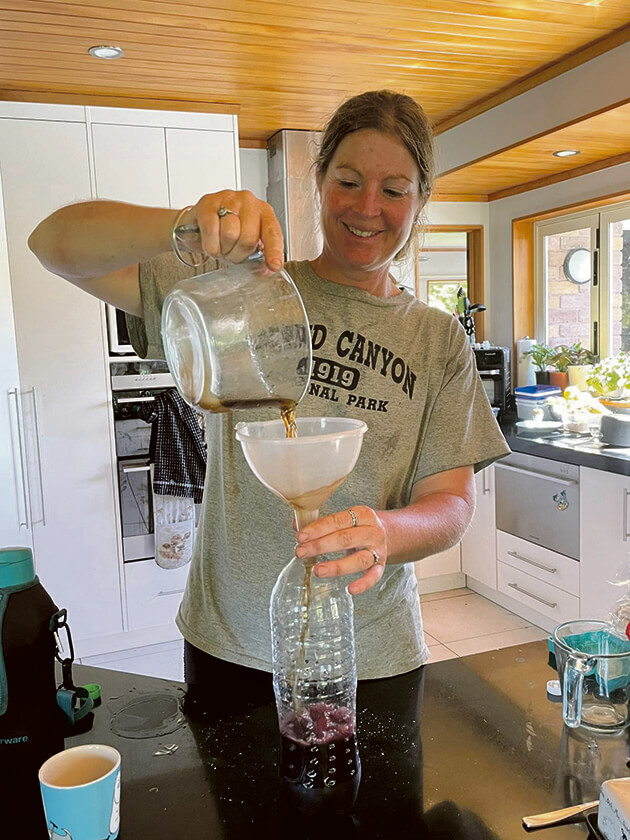
A yellow-legged hornet trap
Mountain View Honey apiarist Lindy Bennett is building traps to catch bee eating yellow legged hornets.

Lindy Bennett is making yellow-legged hornet traps on her Pirongia farm. Photo: Chris Gardner
Anger is mounting over the pace at which the Ministry for Primary Industries acted after two male hornets were found in Auckland six months ago.
The alarm bells were heard by the public only in the last two weeks after the first of a series of queens were found building nests.
The nests have all been discovered in Auckland but Bennett is worried for the thousands of bees she keeps in 50 hives across the Waikato and Bay of Plenty regions.
A single hornet can kill 50 bees in a day and in France the hornets devastated bee populations.
Bennett’s hives produced 1000 kilograms of honey last season.
“It’s disappointing to hear about the incursion, but we’re hopeful Biosecurity NZ can get on top of it quickly. We are following updates closely and ready to support local monitoring efforts if needed,” Bennett said.
“The potential spread south is a real concern. Hornets could have a big impact on bees, and that would flow on to pollination and honey production.”
Bennett has hives near Mounts Kakepuku, Maunganui, Ruapehu and Pirongia as well as in Waitomo and is installing the traps near her hives.
She creates a grape juice, sugar, and water syrup which is poued into a bottle with a hole cut in the side.
Northland conservationist Brad Windust warns the country has only “one summer” to resolve the problem.
“When two male Asian hornets were discovered six months ago, it could only mean one thing: a queen hornet had made its way into the country, built a nest, and gone undercover last summer,” Windust said.
“As far as I’m aware MPI didn’t even bother to tell the public. That nest would have released hundreds of queens last autumn, each capable of dispersing up to 34 km.
Thousands of traps should go out in a grid across the Auckland region and thousands more in the summer months to catch live worker hornets so that tiny tracking devices can be attached, allowing them to be tracked back to their nest and then can be destroyed, he said.








